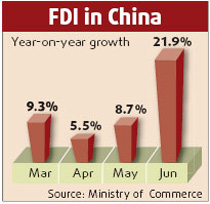The nation's top oil company PetroChina said yesterday it will extract more resources from its fourth-largest oilfield over the next two years.
Output from Changqing, the oil and gas field located in Northwest China, will reach 30 million metric tons of oil equivalent in 2009. This year's production target from the field is 20.5 million tons, Wang Daofu, president of Changqing Oilfield Co, said on the website of China National Petroleum Corp, PetroChina's parent company.
"This is the seventh consecutive year Changqing has increased its oil and gas output. The average annual growth is 2 to 3 million tons," Wang said.
Annual production growth of 500,000 tons of oil equivalent is already fast and efficient enough for an oilfield, let alone a jump of 2 to 3 million tons, according to Kang Yuzhu, a senior researcher with the Sinopec Exploration and Production Research Institute.
The strong output growth momentum of Changqing Oilfield will continue until 2015, Wang said.
PetroChina plans to ramp up research and development to boost its reserves. It's plowed 700 to 800 million yuan per year into R&D in recent years, Wang said.
The company is counting on technology innovation to find hidden reserves at existing oilfields where output is slowing.
It costs less to explore existing oilfields than drill wells in new areas, said Han Xiaoping, an analyst with energy website China5e.com.
"The facilities are there and people are familiar with the geological conditions of existing oilfields," said Han.
But he said the reserve potential of existing oilfields could be limited compared with new fields.
In the next decade, PetroChina plans to increase its proven oil reserves to 100 million metric tons per annum at its Daqing Oilfield to meet rising energy demand.
Daqing Oilfield is the leading and oldest oilfield in China. Its current output is around 43 million tons of oil equivalent per annum. As oil demand picks up, Daqing Oilfield must boost exploration to find more oil and gas reserves, PetroChina said.
The nation's oil demand will rise 5.7 percent to 7.6 million barrels a day this year and gain 5.6 percent next year, the International Energy Agency was quoted as saying.
(China Daily October 19, 2007)


